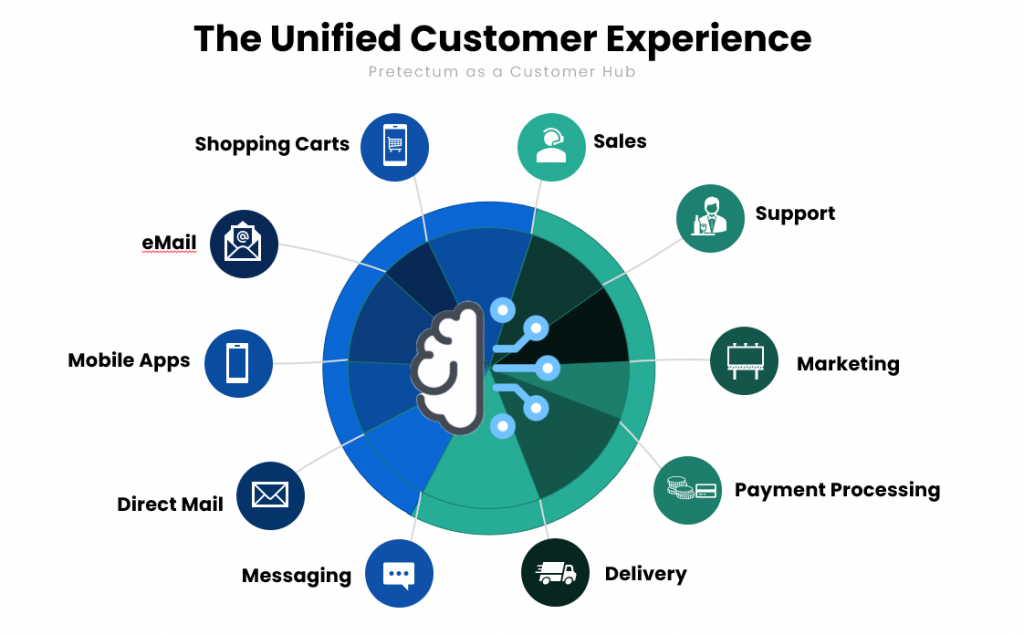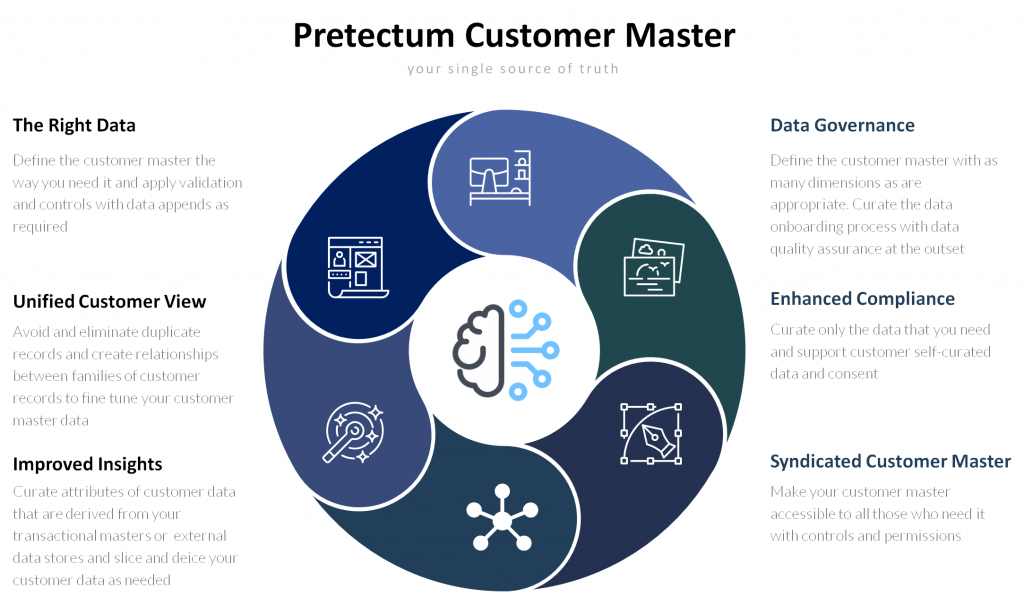In insurance, understanding and managing customer data is crucial for success. The concept of the “Customer Master” has progressively grown in interest as a tool for insurers aiming to enhance customer experience, streamline operations, and drive growth.
What is a Customer Master?
In a centralized customer profile repository, the Customer Master consolidates all customer-profile-related information of the organization. For insurers, this includes data such as personal details, some policy information, some sort of indicator reflecting claims history, and details of some interactions across various channels. The customer master serves as a single source of truth, enabling insurers to gain a holistic view of their customers to support analytics, conversations and manage some aspects of risk.

The Customer Master’s Importance
Insurance as an industry, is inherently data-driven. Insurers rely on accurate and comprehensive data to assess risk, underwrite policies, and manage claims. A well-maintained customer master profile is essential for several reasons:
- Enhanced Customer Experience – having a complete view of the customer, insurers can offer personalized services and timely communication, leading to improved customer satisfaction and loyalty.
- Operational Efficiency – a centralized customer master reduces data redundancy and inconsistencies, streamlining processes and reducing administrative costs.
- Regulatory Compliance – insurers are required to adhere to strict regulations regarding data privacy and security. A customer master helps ensure compliance by maintaining accurate and up-to-date records.
- Data-Driven Decision Making – access to a comprehensive customer data profile means insurers can make better informed decisions regarding product development, marketing strategies, and risk management.

Key Components of a Customer Master
Building an effective customer master involves integrating various data sources and ensuring data quality. This includes consolidating data from multiple sources such as CRM systems, policy administration systems, and claims management systems; implementing processes to ensure data accuracy, completeness, and consistency in support of Data Quality.
Establishing policies and procedures for data management, including data privacy and security measures and categorizing customers based on demographics, behavior, and preferences enables targeted marketing and service delivery. In the financial services industry, regulatory bodies are looking for transparency and auditability in all financial processes.
Case Study: Shifting spreadsheet dependence and profile fragmentation
A leading global insurer, observed a problem with customer mastering as a result of the extensive use of spreadsheets by brokers, to supply and maintain customer and policy information. As a result, the company faced challenges with customer profile fragmentation, leading to inefficiency and increased risk
By implementing a customer master, the Insurer achieved significant improvements in a number of areas:
Risk Reduction – The insurer implemented a Single Customer View (SCV), which allowed them to identify instances where policyholders held multiple products insuring the same risk. This comprehensive view helped mitigate potential overinsurance and reduced the company’s overall risk exposure.
Enhanced Customer Relations – By establishing a more complete understanding of customer profiles and product adoption, the insurer was able to offer more personalized product recommendations and consolidations. This approach, facilitated by deduplication and the creation of Golden Nominals, led to improved customer engagement and satisfaction.
Operational Efficiency – The implementation of a Single Source of Truth (SSOT) significantly improved processes for analysis and customer communication. This centralized data repository streamlined operations, reducing churn and improving customer Net Promoter Scores (NPS). The elimination of data silos and fragmented information allowed for more efficient and accurate decision-making.
Regulatory Compliance – The centralized data repository ensured compliance with data protection regulations. By having a unified system for managing policyholder information and data handling, the insurer reduced the risk of penalties associated with non-compliance. This approach aligns with increasing global regulatory standards for data protection and management.
This case study demonstrates the transformative power of implementing a customer master system in for insurers. By moving away from spreadsheet dependence in line with what Deloitte referred to as “ambient computing” and “Core renaissance”. This approach embraces a centralized, data-driven approach, the insurer was able to achieve significant improvements in risk management, customer relations, operational efficiency, and regulatory compliance.

Challenges in Implementing a Customer Master
While the benefits of a customer master are clear, insurers may face several challenges during implementation:
- Data Silos: Integrating data from disparate systems can be complex and time-consuming.
- Data Quality Issues: Ensuring data accuracy and consistency requires ongoing effort and investment.
- Change Management: Transitioning to a customer master approach may require significant organizational change and employee training.
- Technology Integration: Selecting and integrating the right technology solutions is critical for success.
Future Trends in Customer Master Management
As MDM technologies continues to evolve, the future of policy holder customer master management in insurance is likely to include the leveraging of AI and ML to enhance data analysis and customer insights.
AI and ML can help in identifying patterns and trends within customer data that may not be immediately apparent through traditional analysis methods. This can lead to deeper customer insights, allowing insurers to tailor their products and services to better meet the needs and preferences of individual policyholders. Furthermore, these technologies can facilitate real-time data processing, enabling insurers to respond more quickly to changes in customer behavior or market conditions.
Improving customer insights, AI and ML can also enhance the accuracy and reliability of customer data by automating data cleansing and validation processes. This can reduce the risk of errors and inconsistencies in customer records, leading to more effective decision-making and policy management.
With the Pretectum CMDM, you have the ability to more easily find policy holders with the AI driven search capabilities. Built to support real-time and batch based processes, there is also already the ability to make use of it as a cloud-based SaaS solution for customer MDM of Insurer policy holders. With Pretectum’s enhanced data security comprising, encryption, role based access controls and data masking, Pretectum CMDM provides Insurerers with their own assurances around keeping customer data privacy at the forefront of an their data management practices.
Overall, the future of policyholder customer master management in insurance is likely to be characterized by increased efficiency, better risk management, and a more personalized customer experience, all driven by the strategic implementation of AI and ML technologies.
We view customer master data management with Pretectum CMDM as a vital tool for navigating the complexities of the modern insurance landscape. By consolidating customer data into a single, comprehensive repository, insurers can enhance customer experience, improve operational efficiency, and drive growth. While challenges exist, the benefits far outweigh the obstacles, making the investment in a customer master a strategic imperative for insurers looking to thrive in a competitive market.
As technology continues to advance, insurers must stay ahead of the curve by embracing innovative solutions and best practices in customer master management. By doing so, they can unlock the full potential of their customer data and position themselves for long-term success. Contact us today, to learn how we could help.


